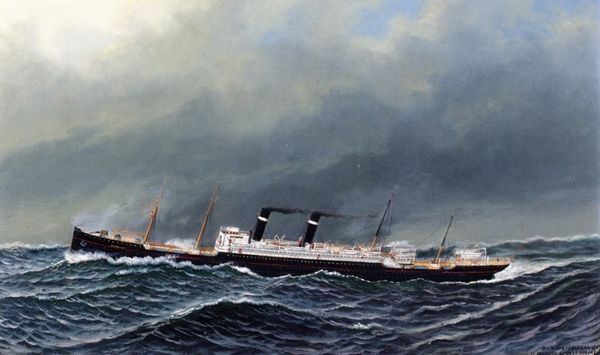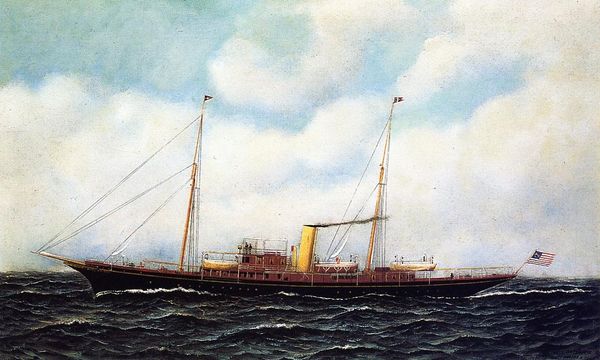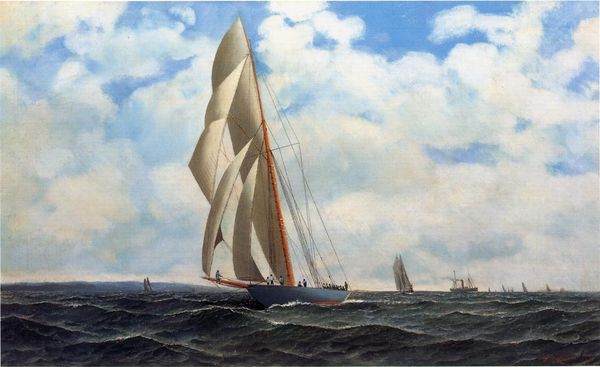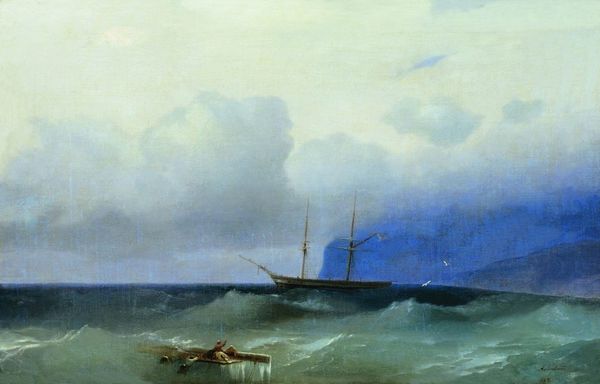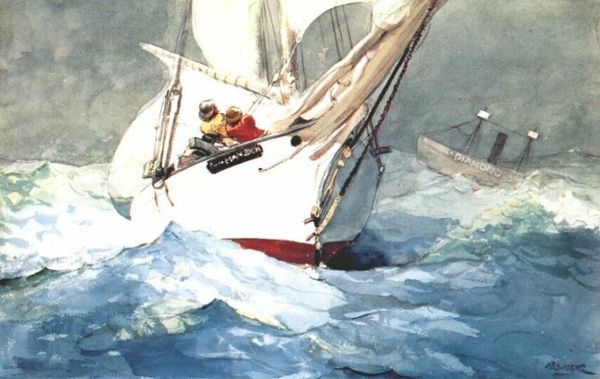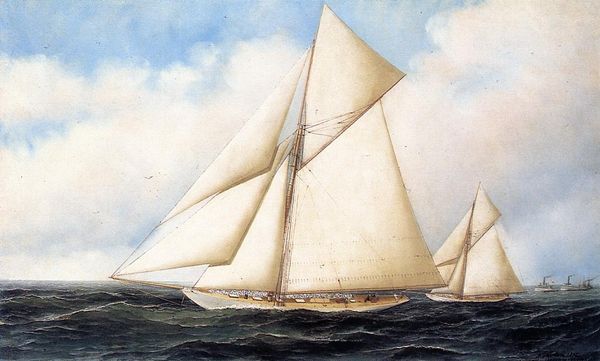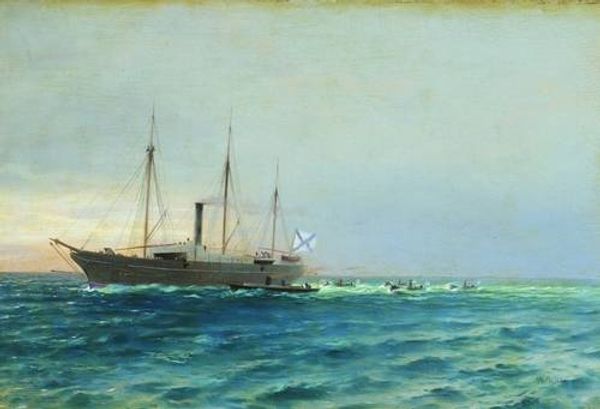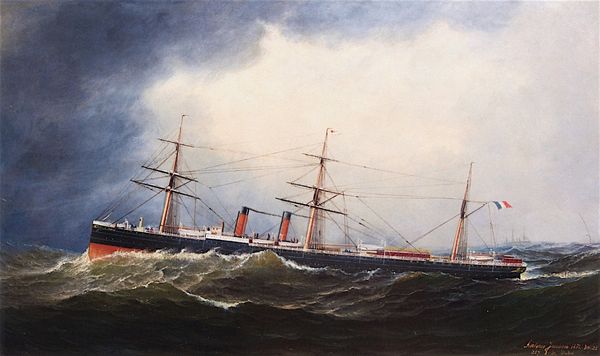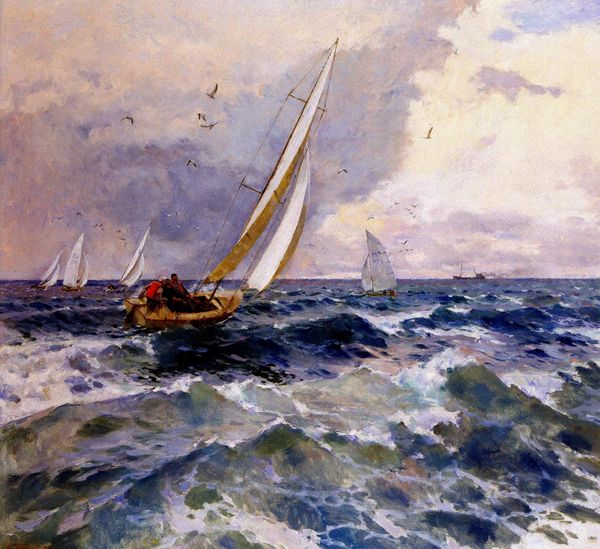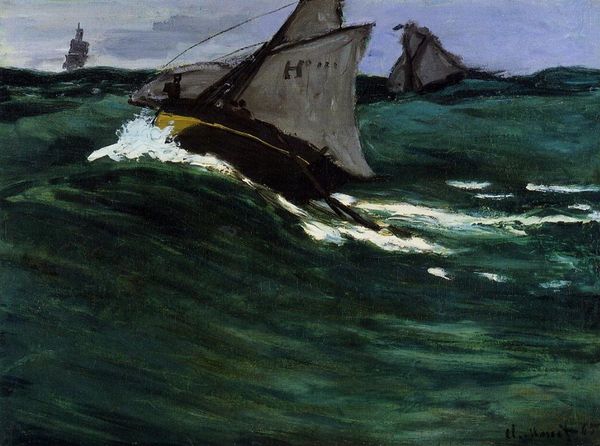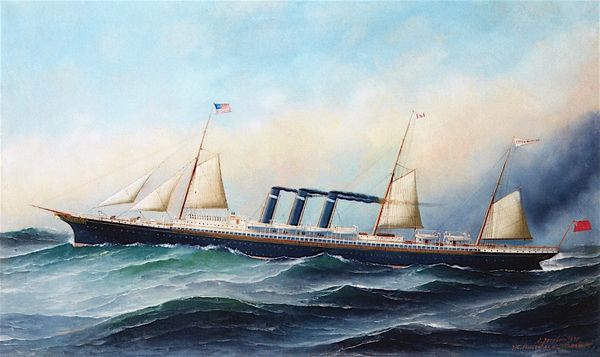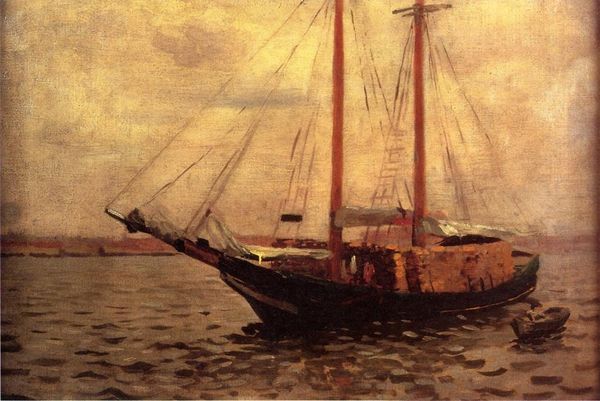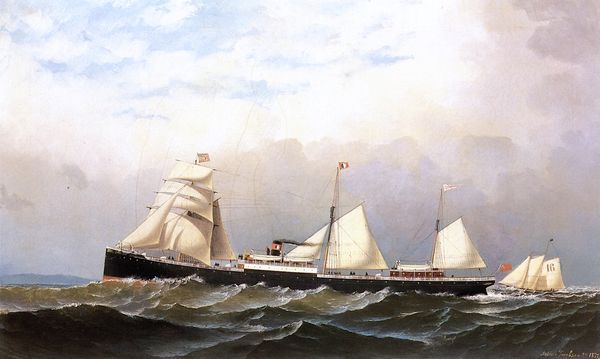
Copyright: Public domain US
Curator: Well, here we have Edward Hopper's "Tramp Steamer" from 1908. He captured this scene using oil paint on canvas. What are your initial thoughts? Editor: It feels bleak, almost lonely. The dark hull of the ship against that tumultuous sea... there's a strong sense of isolation despite the presence of a working vessel. The brushstrokes look raw. Curator: Yes, the visible brushwork definitely emphasizes the materiality of the paint, the very act of applying pigment to canvas. Notice how Hopper isn’t necessarily striving for photorealism but is capturing something much more tactile and immediate in the work itself. What about the actual work conditions for a ship worker and labor itself in this case? Editor: I find it fascinating how Hopper, early in his career, chose a subject that speaks to maritime commerce. Consider the tramp steamer itself: a symbol of global trade, but also of potentially exploitative labor practices. These ships were the workhorses of the seas, often manned by underpaid crews, their journeys dictated by cargo demands, with the ships subject to whims of the global economies. Curator: Exactly! Hopper’s painting shows labor through the smoke billowing out. Coal was used to produce power, but this job meant enduring stifling heat and toxic fumes. This labor made capital and commodities circulation happen, contributing to wealth disparities between owners and laborers. Editor: And if we broaden the scope, think about the viewers who would have encountered such a painting. Art patrons largely came from privileged backgrounds, disconnected from such work. Hopper’s subject matter invites, or perhaps even forces, a confrontation with the realities of global trade, but within the rarefied context of a gallery or wealthy home. There's a social commentary there, embedded in the presentation and circulation of this work. Curator: Absolutely. Hopper uses industrial material like oil paint, and his attention to subjects typically left out of fine arts brings to focus questions of class, material, and social equity. Editor: It prompts reflections about whose stories are deemed worthy of representation in art, and how those representations reflect—or fail to reflect—the complex power dynamics of the time. Overall it serves as a really impactful starting point for understanding Hopper’s development as an artist. Curator: A pertinent analysis of how context changes what we view when engaging in such pieces, it enriches not only the artwork but also prompts considerations of what exists outside the image’s perimeter.
Comments
No comments
Be the first to comment and join the conversation on the ultimate creative platform.
